Can You Plant Garlic In The Spring? Garlic is a plant that is traditionally planted in Autumn or early Winter, and harvested in late Summer. However, it is possible to plant Garlic in Spring, but the size of the bulb will be much smaller than those planted in Autumn. Additionally, the bulb produced will consist of a single clover, rather than several separate cloves.
The size of the Garlic bulbs produced from a Spring planting is smaller, because it has less time to develop than plants sown in Autumn. When sowing cloves in Autumn, the clove will quickly produce a single Green stem and develop its roots, before lying largely dormant in Winter. This short period has a significant impact on the size of the bulb produced.
The reason that the Garlic will consist of a single clove when planted in Spring, is because it has not been exposed to a period of cold before commencing growth. If planted out in Winter, the bulb will undergo a process called Vernalisation, where the cold temperatures create stress on the bulb resulting in division.
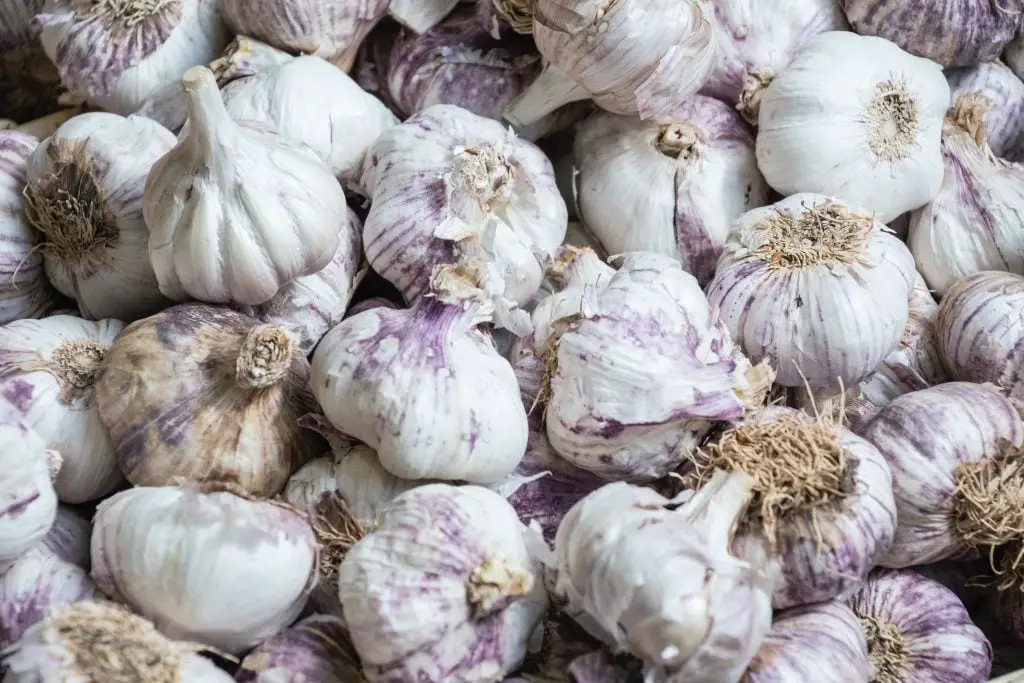
What Are The Types Of Garlic?
There are two general types of garlic; Hardneck and Softneck. The “neck” in the names, actually refers to the stalk that grows from the garlic bulb. Hardneck varieties have a stalk that originates from the center of the bulb and becomes rigid as it matures. Where as Softneck varieties have stalks that consist of leaves, rather than a central stalk which remains soft and flexible through the growing period.
The Garlic that is commonly sold at the grocery store is usually Softneck varieties. They are preferred in commercial settings because of their long shelf life, and relatively mild flavor that is suited to most recipes.
How To Grow Garlic
Garlic, whether it is planted in Autumn or Spring, is started by sowing an individual clove directly into the soil. When planting Garlic, it is best to start by selecting the largest Garlic bulbs you have. If you have a crop from the previous year, always set aside the highest quality bulbs for replanting the following year, rather than eating them. The largest Garlic bulbs will usually have the plumpest cloves, which will in turn, produce large bulbs the following year.
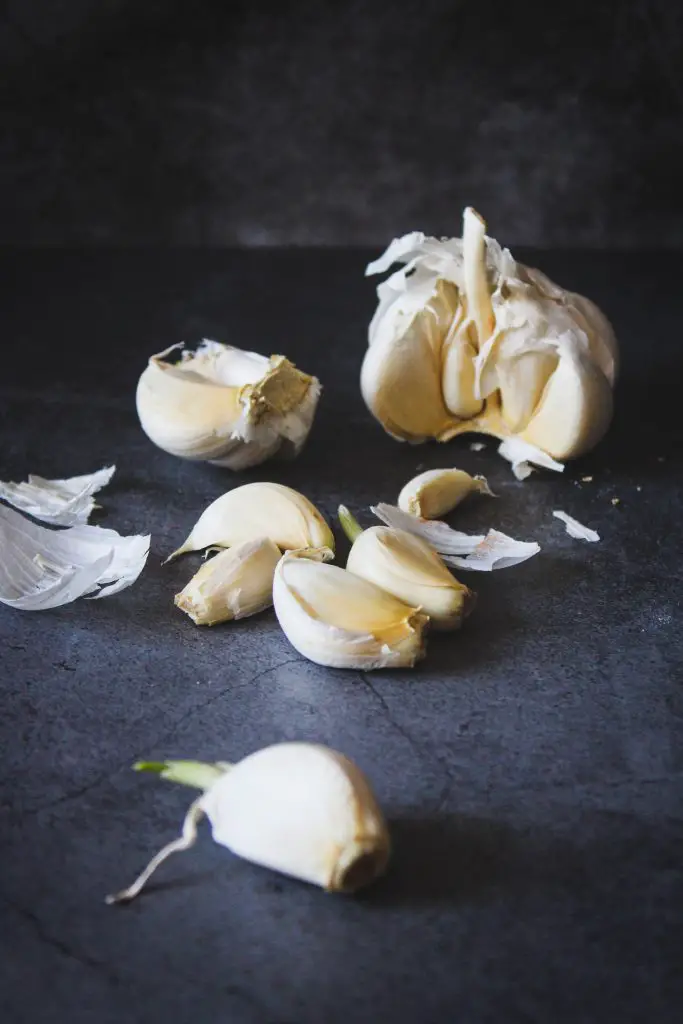
If you are purchasing garlic for the first time try visiting Seeds Now if you live in the US or Thompson and Morgan in the UK. Both companies have a reasonable broad range of Garlics to try and both offer elephant garlic which is worth trying out. Elephant Garlic produces huge bulbs the size of your hand that has a milder flavour that other garlics.
Once the bulb is selected for replanting, break it apart into individual bulbs, ready to be planted. Do not remove the skin of the bulb. If you have limited space for Garlic, select only the largest cloves to plant. These should be placed 2 to 3cm (1 inch) deep into the soil, with the pointy end of the clove facing upward. It is fine to have the very tip of the bulb protruding from soil.
The bulbs should be spaced at least 10cm (5 inches) apart, however, I prefer to plant them 20cm (10 inches) apart, as it allows me to Hoe between the plants which avoids the need for hand weeding, which is time consuming. If you are planting garlic in the Spring, bulbs can be planted closer together as the bulbs will not get as large.
In regions with colder Winters the timing of Autumn sowings can be a little tricky. The aim is to get the Garlic to establish roots before the big freeze-up arrives, but not to allow the top growth to develop too much, as the leaves will not survive Winter.
If the Garlic’s foliage is destroyed by the Winter weather, it can re-grow without any negative impacts. However, if this event occurs twice, the yield achieved will be decreased significantly. The general rule of thumb is to plant Garlic 2 to 3 weeks after the first frost, but before the ground freezes solid for the Winter. If planted in this manner, the Garlic will be able to withstand Winter lows of -35°C (-30°F).
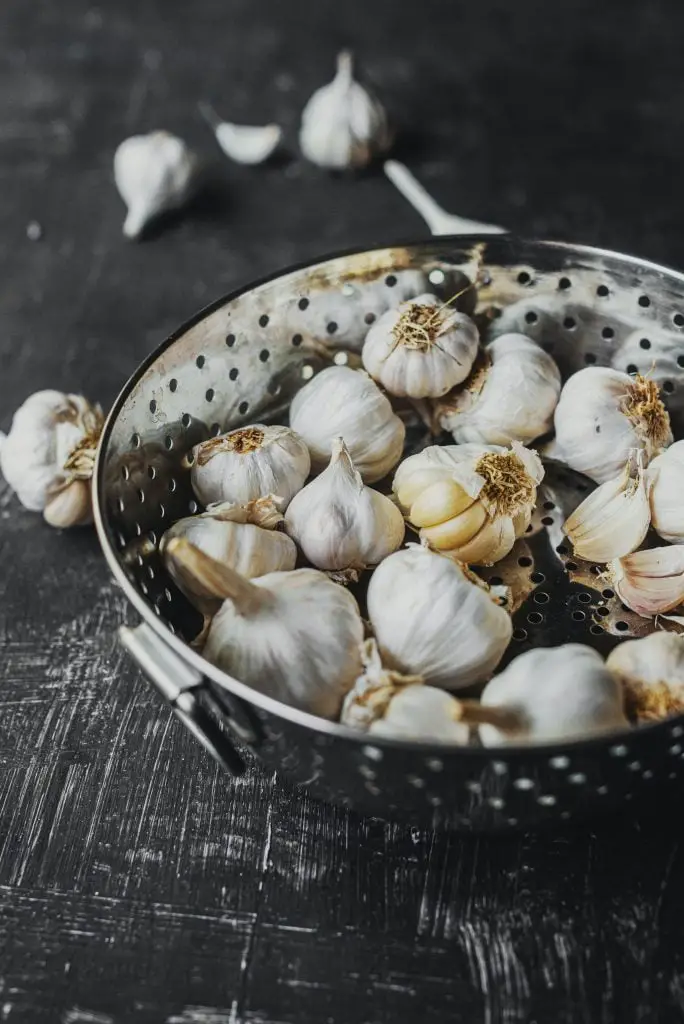
When selecting a location to plant Garlic, avoid planting them in areas where you have grown Alliums (Onion, Leek and Chives) for the last 12 months to 2 years. As this reduces the chances of having issues with disease, to learn more about how to manage your soil through crop rotation, go to https://planyourpatch.com/what-is-crop-rotation-and-why-is-it-important/.
The location in your garden should be sunny, receiving at least 6 to 8 hours of sunlight each day. The soil should contain plenty of organic matter and be moist, but not water logged. We recommend using the No Dig technique to manage soil, as it reduces weeds and the time required to maintain your garden. To read more about this go to https://planyourpatch.com/how-to-prevent-weeds-from-growing/.
Once the cloves are planted, Green shoots will appear relatively quickly. For Autumn plantings these shoots are usually 10 to 15 cm (4 to 6 inches) tall, and remain that height throughout the Winter, until growth recommences in Spring. The shoots will increase in size and thicken during Spring, before the tops begin to Yellow and die back, in late Spring or early Summer. This die back of the foliage is an indicator that the the Garlic cloves are ready to harvested.
For Spring planted Garlic cloves the shoots will take a little while to appear, and the Green tops tend to be longer and more slender than Autumn planted Garlic. When these Green tops reach a reasonable size 8 to 10 weeks after planting, the Spring Garlic will be ready to harvest. Unlike Autumn planted Garlic it needs to harvested relatively quickly, otherwise the stalks that run through the bulb start developing, making it increasingly tough.
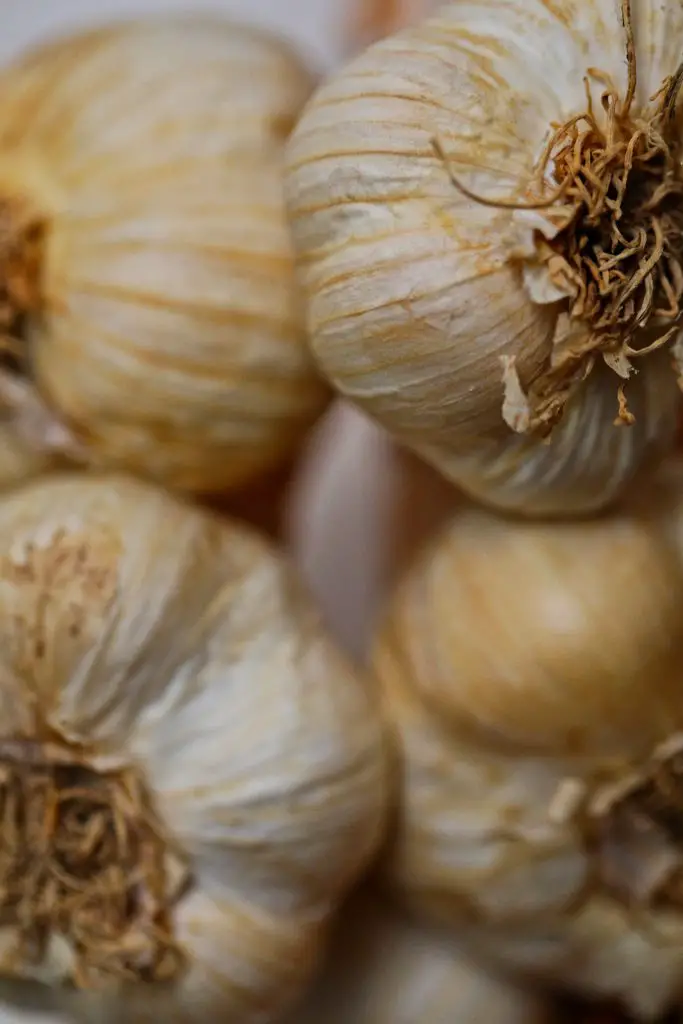
How To Use And Store Garlic
Autumn Garlic
If you are growing Autumn sown Garlic, it can be stored for up to 9 months if stored at temperatures approaching 0°C (23°F). If the Garlic is stored at ambient temperatures, the storage life is reduced to a few months. The other factor that affects storage life is the type of Garlic, Soft Neck Garlic can be stored for up to 9 months, while Hard Neck Garlic will only store for around 6 months.
Garlic needs to be stored in a dark, cool, well ventilated area. However, Garlic should not be stored in a refrigerator, as it encourages the bulbs to sprout. The ideal containers to store Garlic in, is mesh bags or alternatively they can be braided onto a string.
Braiding is a traditional method of storage that prevents vermin from getting to the Garlic, whilst in storage. Braiding starts with a single Garlic that is securely tied onto the end of a string, by its stem. The other end of the string is attached securely, to the point you wish to hang the Garlic from, throughout the storage period.
To create the next layer, pick two Garlic bulbs and tie them together using the dried stems. When this process is complete, the two Garlic bulbs should be securely attached to each other, with about 5cm (2 inches) between them. The next step is to wind the section of stem between the two Garlic bulbs around the string, once or twice, before pushing it downwards, until the Garlic bulb comes into contact with the layer of first Garlic bulbs. Repeat this process, until the braid has reached the desired height. To learn more about the ideal storage conditions, additional details can be found in the article by the University of California http://postharvest.ucdavis.edu/files/251548.pdf
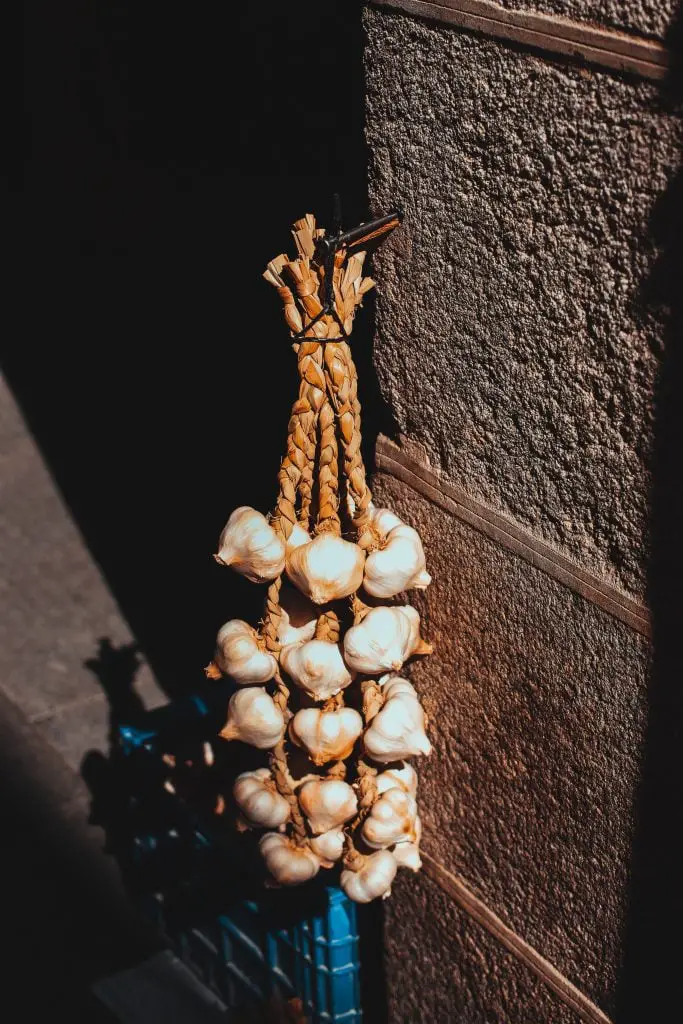
The other alternative is to freeze Garlic. There are many ways to freeze Garlic, which includes freezing whole cloves (peeled or unpeeled), freezing Minced Garlic or Garlic Paste. To learn more about this, go to https://feelgoodfoodie.net/recipe/freezing-garlic/.
Spring Garlic
If you are growing Spring Garlic which has a milder and sweeter taste, it can be used as a substitute for normal Garlic, one stalk is about equal to one clove.
Unlike Autumn Garlic, Spring Garlic can not be stored as readily and will only last 1 to 2 weeks in the Fridge. However, it can be frozen in a similar way to Autumn Garlic or made into Garlic Powder, go to https://homesteadandchill.com/how-to-make-garlic-powder/ for details.
